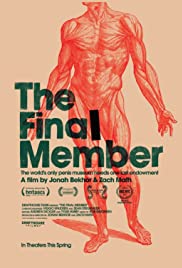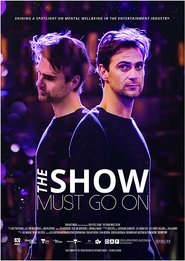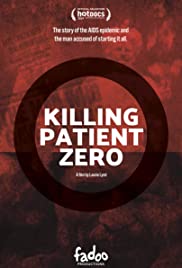
The Battle of Orgreave, recounted by those who lived through it, is contextualised through the history of the British mining union and a government that was hell-bent on breaking it.
You May Also Like

Thirty miles from the Arctic Circle, in the northern Icelandic town of Husavik, stands the Icelandic Phallological Museum – the world’s only Penis museum. Over 40 years, the founder and curator has collected every specimen from every mammal except for one elusive penis needed to complete his collection: The Human Specimen. The film follows the curator’s incredible, sublimely comic, often shocking quest to complete his eccentric collection, and the two intrepid men who have raised their hands to be the first human

Atsushi Sakahara, a victim of the 1995 sarin gas attack in Tokyo’s subway system, travels with Hiroshi Araki, an executive of Aleph (formerly Aum Shinrikyo), the attack’s perpetrators, visiting their respective hometowns and the university they both attended. Conversations unfold, building intimacy: we learn why Araki joined the infamous organization led by Shoko Asahara and why, still, Araki remains an executive member of the cult, even though he was not directly involved in any of the crimes.The beginning of a friendship, a trip for redemption, or the confirmation that each human has to go their own way.

The clash of two worlds in the present-day Europe. As the indigenous population seeks to defend the status quo against escalating immigration, the newcomers are burdened by their own displacement. Forced to flee their homes, they are trying to adapt to the strange new environment.

The Show Must Go On is a personal journey behind the scenes that confronts the epidemic of mental health issues in the Australian entertainment industry.

Skilfully revealing the homophobia behind the headlines, this doc traces the devastating impact of the 1980s AIDS epidemic and clears the name of the Québécois flight attendant who was infamously known as “patient zero.”

Discover the evolutionary secrets of some of the world’s most majestic creatures. From voracious crocodiles and acrobatic birds to stupendous whales and majestic elephants, this documentary follows top scientists on a global adventure as they follow clues from the fossil record and change what we thought we knew about the evolution of iconic beasts.

Forty years ago, Wollongong’s Jobs for Women Campaign, with director Robynne Murphy among its leaders, took on Australia’s most powerful company BHP – and won. But when the 1980s steel slump devastated the city’s economy, the women were forced into the courtroom. Their struggle plays out against a background of societal changes: from anti-discrimination legislation, to the shifting roles of women in the home and workforce (particularly complex in Wollongong’s migrant, non-English speaking households). This fascinating account of the largely forgotten history of Australia’s Steel City was crafted over decades with support from local community volunteers and over 500 donors.

Baratometrajes 2.0 is a feature length documentary on low-budget films made in Spain and dives deep and directly in the guts of most independent films, their characteristics and their reasons for being. More than forty interviews with directors, producers, journalists, cultural managers and distributors are shaping a broad mosaic of opinions and adventures of different creators to get their films and turn them into a reality, allowing the cameras to talk through their methodology work and the secrets that lie behind the making of these productions. Movies like “El mundo es nuestro,” “Mi Loco Erasmus” or “The Cosmonaut” are part of the object of study of this essential documentary that brings us to the reality of New Spanish Cinema Lowcost.

Loved by millions across the World, Benny Hill was an instantly recognisable character. His unique brand of humour ensured that he would forever be remembered as The World’s Favourite Clown. Yet whilst everybody loved Benny Hill, very few really knew the man behind the mask. In this remarkable programme Benny, for the first time on-screen, speaks in-depth about himself, his career and the art of comedy. Going right back to his childhood and early days in the theatre, it’s a remarkable insight into the legend that was Benny Hill. Packed with many of his most famous sketches, the programme is illuminated from start to finish by Benny’s infectious sense of humour. It’s a testimony to his universal appeal that the programme includes revealing interviews from such famous fans as Michael Caine, Mickey Rooney and Burt Reynolds.

George Lopez brings his reflections on aging, Latino family dynamics, and cultural quirks in his final stand-up special. He hilariously embraces the challenges of getting older and touches on generational clashes and Latino superstitions. Bold and personal, Lopez delivers his comedic voice to stories that capture both the humor and heart of his journey one last time.

Beyond the vacation, below deck, cruise ships house thousands of crew members from all over the world, living and working together at sea for months at a time. Journey into their hidden world, and discover the lives of the people …

Pre-historic giants roam the world’s oceans. Go beneath the surface of the sea for an extraordinary look & listen at these majestic creatures, as we explore their social behavior & hunting strategies.